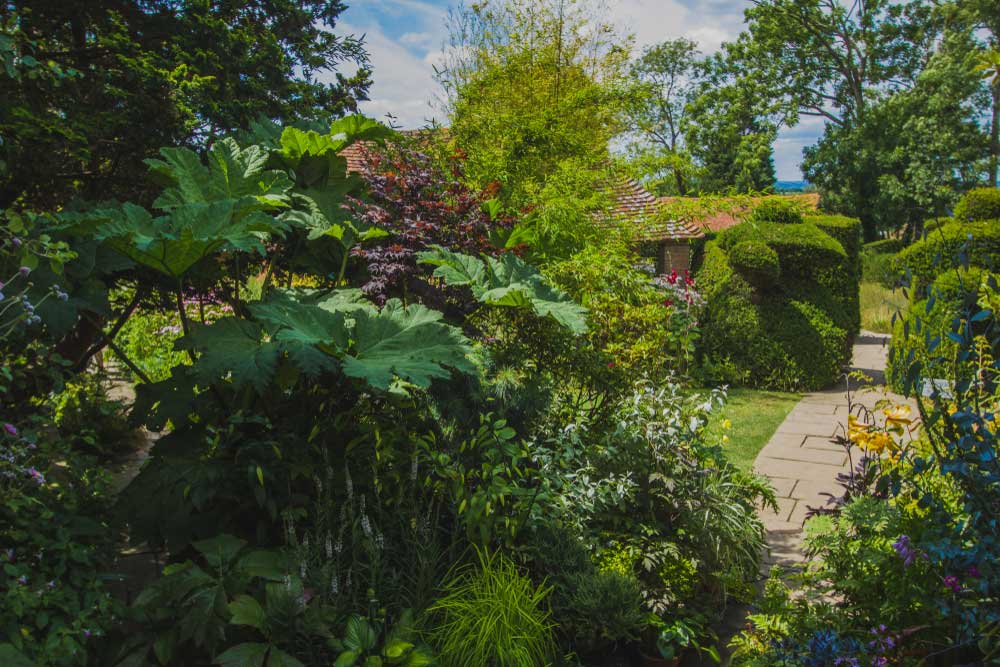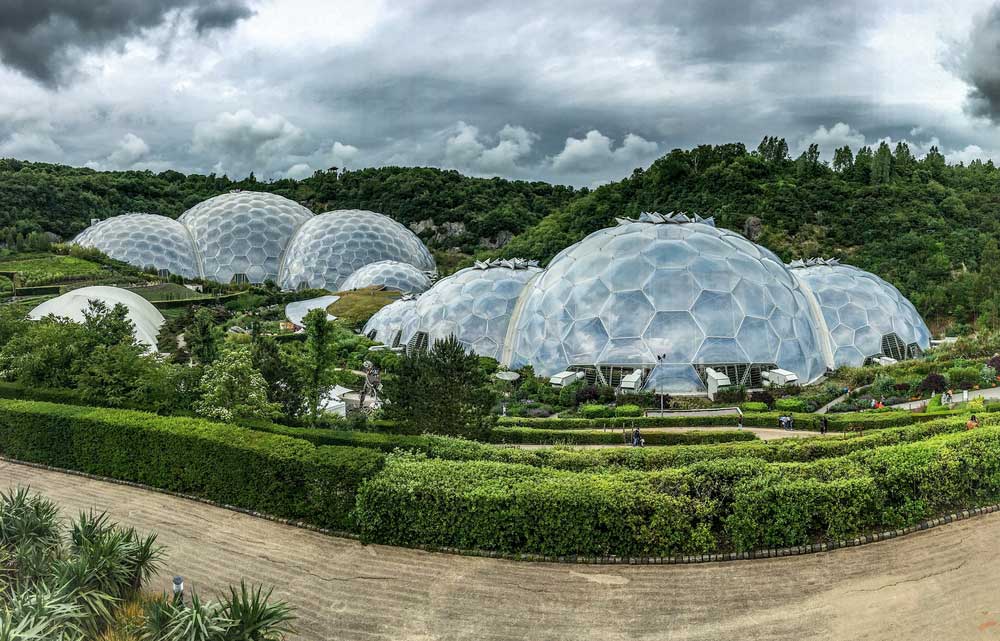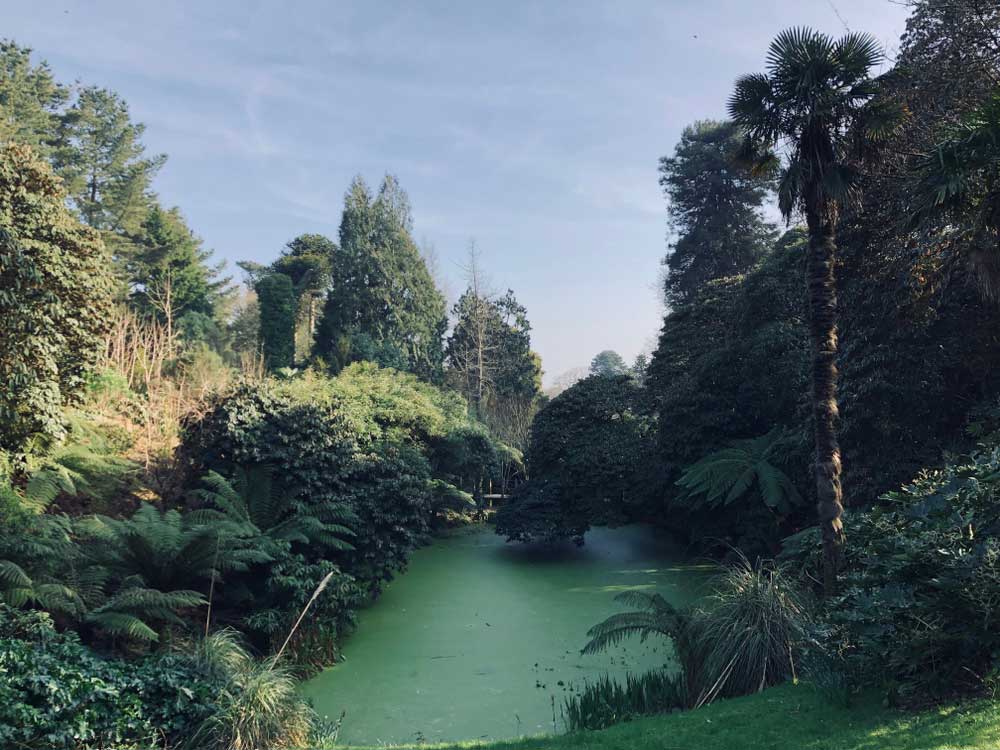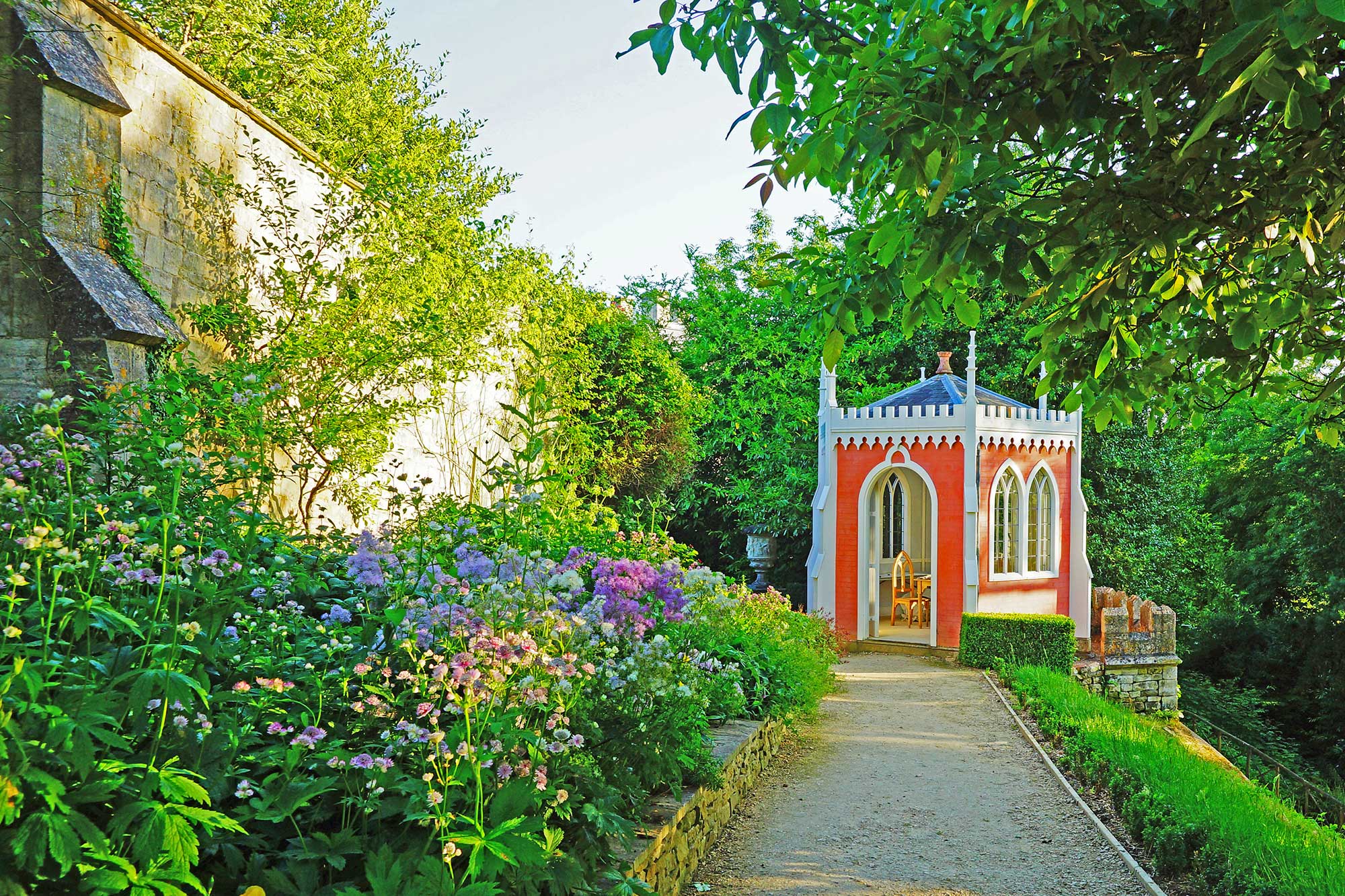Gardens in Bloom in the South of England
Southern England boasts a huge variety of vibrant gardens, tucked away within stunning countryside, just waiting to be discovered and enjoyed.
This tour travels to some of the very best of these gardens. Many are life works created by our greatest gardeners who made history with their stunning and innovative creations.
There are so many gardens to choose from and this suggested itinerary can be tailored to be shorter or longer and more detailed. Visits to private gardens, talks with the gardeners and other experts, or a trip to the World Famous Chelsea Flower Show are all possible options.
We recommend this tour is taken in May to enjoy the gardens at their best.
Itinerary at a Glance
- A specialist tour manager and guide throughout the trip
- Travel to Kent and Sissinghurst Castle Garden, Vita Sackville-West’s world famous 20th century garden
- Visit Great Dixter in East Sussex, the family home of Christopher Lloyd, the world expert on clematis
- Enjoy Batemans; Rudyard Kipling’s home
- Visit Fairfield House Rose Garden a five acre informal garden
- On to Mottisfont Abbey; a converted 12th century Augustinian priory
- Visit to the Sir Harold Hillier Gardens with the greatest collection of hardy trees and shrubs in the world
- Explore Coleton Fishacre Gardens near the south Devonshire coast
- Take the river ferry to Dartmouth for a cream tea
- Visit the ‘Lost Gardens of Heligan’, seat of the Tremayne family for more than 400 years
- Explore Trewithen Gardens near Truro
- See the Trebah Gardens; listed amongst the 80 finest in the world
- The Eden Project; with the world’s largest greenhouses and a dramatic global garden for the 21st century
- Drive to Bodmin to visit Lanhydrock House and Garden, one of the most fascinating and complete late 19th-century houses in England, full of period atmosphere
- A scenic drive through the Dartmoor National Park to Castle Drogo and garden
- Visit East Lambrook Manor to see its National Collection of Geraniums and the internationally famous Grade I listed 'cottage garden' designed by the late Margery Fish
- Drive to Westbury-on-Severn to visit the Westbury Court Dutch Water Gardens with its 16th century plants
- Enjoy the Painswick Rococo Gardens
- Visit to Hidcote Manor Gardens



Day One: Arrive in London and onto Kent
- A meet and greet at London Heathrow Airport with the experienced specialist garden tour manager and a transfer to the deluxe motor coach.
- Travel to Kent and Sissinghurst Castle Garden, one of the world’s most famous 20th century gardens.
- The garden is the creation of the writer and poet Vita Sackville-West and her husband, diplomat and writer, Harold Nicolson. The garden is made up of 10 distinct ‘garden rooms’ which have had a terrific influence on gardening in the 20th century. The Lime Walk is designed for spring effect; the Cottage Garden uses only hot colours, reds oranges and yellows; and the White Garden, is host to many shades of white, greys and greens.
- Overnight stay in Tunbridge Wells
- A scenic drive through the gently undulating hills of the weald of Kent, known as ‘The Garden of England’, to visit Great Dixter in East Sussex.
- This was the family home of Christopher Lloyd, the world expert on clematis, who devoted his lifetime to creating one of the most experimental, exciting and constantly changing gardens of our time.
- Incorporating many medieval buildings, the gardens surround the house, each complementing the other. There is a wide variety of flora and fauna to see here from yew topiary; carpets of meadow flowers; the colourful tapestry of mixed borders including the famous Long Border; natural ponds; a formal pool and the exuberant Exotic Garden.
- Drive on to Burwash to visit Batemans.
- The interior of this beautiful 17th century house, which was Rudyard Kipling’s home from 1902 to 1936, reflects the author’s strong associations with the East. There are many oriental rugs and artefacts and most of the rooms including his book-lined study are much as Kipling left them.
- The delightful grounds run down to the small river with its watermill, and contain roses, wild flowers, fruit and herbs. Kipling’s Rolls-Royce is also on display here.
- Overnight in Chichester.
Day Two: Hampshire
- Travel to Hampshire to visit the Fairfield House Rose Garden, a five acre informal garden, which is unusually situated on chalk.
- The garden has extensive walls, mature trees and a large variety of shrub and climbing roses with a good display of bulbs to be enjoyed in the spring.
- On to Mottisfont Abbey, set amidst glorious countryside along the River Test. This 12th century Augustinian priory, converted into a private house after the dissolution of the monasteries during the reign of Henry VIII, still retains the spring or ‘font’ from which its name is derived.
- The abbey contains a drawing room decorated by Rex Whistler and Derek Hill’s 20th century picture collection, but the key attraction is the grounds with magnificent trees, walled gardens and National Collection of old-fashioned roses.
- Visit to the Sir Harold Hillier Gardens which holds the greatest collection of hardy trees and shrubs in the world.
- The 180 acre gardens are home to a unique collection of more than 42,000 plants (12,500 different types). In 1997 the gardens were included by English Heritage on the Register of Parks and Gardens of Special Historic Interest in England for the value of the plant collections. These collections continue to be enhanced and developed and now boast the largest winter garden of its kind in Europe as well as the Ghurkha Memorial Garden with an extensive collection of Nepalese plants.
- Overnight stay in Exeter.
Day Three: South Devon/Cornwall
- Travel to South Devon to visit to Coleton Fishacre Gardens. This spectacular garden lies in a Devonshire combe or valley, sloping to the cliff tops and the sea, on the beautiful South Devon coast.
- The garden is bordered by belts of Monterey Pine and broad-leaved native trees with a collection of tender and exotic plants, which thrive in the subtropical climate and sheltered location. In the spring and early summer there is a profusion of wild flowers amid the colourful display of rhododendrons, camellias and azaleas.
- Take the river ferry to Dartmouth for a cream tea before continuing west to Cornwall for the next visit.
- Visit the ‘Lost Gardens of Heligan’, seat of the Tremayne family for more than 400 years and one of the most mysterious estates in England.
- Derelict for almost a century the estate has been being lovingly and painstakingly restored to provide a fascinating insight into the Victorian garden. See the ingenuity of the gardeners with the fascinating manure fuelled greenhouse used for growing exotic fruits.
- Overnight stay in Falmouth.
Day Four: Cornwall
- Explore Trewithen Gardens near Truro.
- Trewithen means ‘house of the trees’, which truly describes this fine early 17th century Georgian house’s splendid wood and parkland setting.
- The gardens, covering some thirty acres, are renowned for their magnificent collection of camellias, rhododendrons, magnolias and many rare trees and shrubs, seldom found elsewhere in Britain. The extensive woodland gardens are surrounded by traditional landscaped parkland.
- Visit the Trebah Gardens; this 26 acre ‘garden of dreams’ is listed amongst the 80 finest in the world.
- A steeply wooded ravine with huge 100 year old tree-ferns, ancient oaks, rhododendrons, magnolias and camellias, descends to a secluded beach on the Helford River. There is also a stream which cascades over waterfalls and water gardens with ponds full of koi carp and on through two acres of massed blue and white hydrangeas.
- The Eden Project. Eden boasts the world’s largest greenhouses and a dramatic global garden for the 21st century.
- The size of thirty football pitches it nestles like a futuristic space station in an old china clay pit, a 50 metre deep crater that is home to thousands of important and beautiful plants.
- Three of the world’s climate zones have been chosen for interpretation; the Humid Tropics in the largest conservatory in the world; the Warm Temperate regions are contained within the two giant geodesic conservatories and the Cool Temperate zone thrives on the climatic advantages that Cornwall has to offer.
- A fabulous range of plants from North America to Chile rub shoulders with the much loved native flora of Cornwall, the Atlantic rainforests, and many of the more familiar crops that have shaped our lives.
- Overnight stay in Falmouth.
Day Five: Cornwall
- Drive to Bodmin to visit Lanhydrock House and Garden, one of the most fascinating and complete late 19th-century houses in England full of period atmosphere. Set in a glorious estate of 900 acres of woods and parkland running down to the River Fowey, with an extensive network of footpaths.
- The gatehouse and north wing, with a magnificent 32 yard long gallery, is from the original 17th century house, the rest of the house was rebuilt following a fire in 1881. The garden has a stunning collection of magnolias, rhododendrons and camellias, and offers fine colours right through into autumn.
- A scenic drive through the Dartmoor National Park to Castle Drogo and garden. This granite fortress commanding panoramic views of Dartmoor, built between 1910 and 1930 for the self-made millionaire Julius Drewe, is one of the most remarkable works of Sir Edwin Lutyens.
- The terraced formal garden has an established rhododendron and magnolia collection, spring bulbs, summer and autumn flowering herbaceous borders, rose garden, shrub garden and circular croquet lawn.
- Overnight stay in Exeter.
Day Six: Somerset
- Entrance to East Lambrook Manor to see its National Collection of Geraniums and the internationally famous Grade I listed ‘cottage garden’ designed by the late Margery Fish.
- The gardens were first designed in the 1940s-1960s and today remain a monument, not only to Margery Fish, but also her place in history as one of the most important influences on ‘English Cottage Gardening’. Visitors travel from all over the world to see her creation and owners Robert and Marianne Williams have undertaken a brave and extensive restoration in order to preserve them for future generations.
- Overnight stay in Bath.
Day Seven: Gloucester
- Drive to Westbury-on-Severn to visit the Westbury Court Dutch Water Gardens with its 16th century plants.
- Originally laid out in 1696–1705, this is the only restored Dutch water garden in the UK and is planted with species dating from before 1700 and is therefore of great historical interest.
- There are kitchen, vegetable, fruit, herbs and espaliered fruit trees here; all 16th and 17th century varieties.
- Drive to Painswick to see Painswick Rococo Gardens, a unique example of the brief but flamboyant period of English Rococo design of the 1700s.
- By the 1970s the garden was completely overgrown with woodland, but has since been restored. This Rococo pleasure ground shuns the extensive use of flowering plants and concentrates on surprising the visitor with sudden vistas and features laid out in an asymmetric pattern.
- Visit to Hidcote Manor Gardens. Laid out over eighty years ago by a team of 12 gardeners using plants the owner Johnston had travelled the world in search of.
- An astonishing variety of effects have been created; hedges, walls, water and paving all combine to create a profuse and jungle like colour and texture. In contrast areas are deliberately plain to give calm and restful interludes and so increase the impact of the garden.
- Overnight stay in Stratford upon Avon.
Day Eight: Return Home
- Transfer to London Heathrow Airport for the return flight home.



